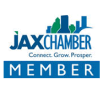Cloud computing has become the preferred option of several entities in both the government and private sectors. For a simple definition, Cloud computing refers to servers, services, storage and software delivered over the Internet. That is, all activities of a system and/or a network of systems are completely done online. There will be no physical storage or sharing of data. This helps reduce overhead costs as an entire IT support team will no longer be required. For example, separate systems along with manpower need not be maintained for various aspects of a company/agency/enterprise.
More clarity on the advantages of cloud computing can be derived by considering an imaginary scenario. A financial organization or government agency offering financial services may have several departments in it. Their individual objectives could include sales, loans, human resources, defaulters, marketing, and more. Each department and specifically all employees in each department will have their own systems with independent files. A problem that could arise in such situations is the extra expenditure required in maintaining these systems, hiring staff for the purpose, chances of mismatches in different systems (for e.g., the due amount entered in loans department could differ from the amount entered by the accounting department), and also the security of these systems. They will be prone to unauthorized usage as well as leakage of information through system hacking and malware. In addition, unexpected events such as fire, natural disasters and robbery could disrupt the entire process.
A better alternative which ensures that none of these problems occur, is cloud computing. Cloud Computing also enables management of systems along with other IT infrastructure from any location at any time via internet access.
Software as a Service
Software as a Service (SaaS) is one of the most used cloud computing service models. Some popular examples are Google Mail, Google Apps and Dropbox. SaaS services are usually a subscription model. The hardware and software are provided by the vendor. Characteristics of this model are:
- Accessible over the net
- Hosted on a remote server
- Managed from a single, central location
- Users of SaaS are not responsible for hardware/ software updates
Common uses of SaaS enabled applications are for email communication, sharing content across teams for scheduling meetings. They can also help keep track of projects and update status on tasks.
Platform as a Service
Platform as a Service (PaaS) is like SaaS, but instead of providing software or applications, it provides a framework or platforming which applications or servicers can be develop and deployed. Like SaaS, PaaS also uses a subscription model of pricing. Features of this model include;
- Built on virtualization technology
- Scaling up or down is easy to adjust to business changes
- Provides platforms for a variety of services with development, deployment, testing etc.
- Multiple users can access the same development app
- Web services and databases are integrated
PaaS also enables multiple users to access and work on a project at the same time. Moreover, PaaS applications offer tools that reduce coding and boosts app development. As a result, there is faster progress from the testing stage to app deployment.
Infrastructure as a Service
Infrastructure as a Service (IaaS) is one of the building blocks of cloud services and the most flexible option of the three models. It is highly scalable and offers complete control on cloud-based IT infrastructure. In this concept, physical hardware and infrastructure management are outsourced. That is, a company need not purchase anything new for a business venture or project. By accessing IaaS services, the company will receive a "virtual data center" and maintain direct access to the vendor's virtual servers through an application programming interface. IaaS is best for hosting websites and analyzing data as the user does not require to purchase and maintain vast private server rooms. Virtual Machines (VMs) are used to house data instead of physical servers. Core features are:
- Services that are highly scalable
- Pay-what-you-use model of pricing
- Multiple users on a single piece of hardware
- Dynamic & flexible
SGS Technologie specializes in providing all three types of cloud computing models. We are a software development and AI company headquartered in Jacksonville, Florida with branches in Tallahassee (FL) and Frisco (TX). Moreover, we are a certified AWS partner which is the leading provider of IaaS services in the world. Reach out to us at any of our offices or through mail/phone for a quick discussion.

<script type="application/ld+json">
{
"@context" : "http://schema.org",
"@type" : "Article",
"name" : "Selecting the Right Cloud Model",
"author" : {
"@type" : "Person",
"name" : "majestic"
},
"image" : "https://www.sgstechnologies.net/sites/default/files/2021-01/Depositphotos_345137690_xl-2015.jpg",
"articleSection" : "Cloud computing has become the preferred option of several entities in both the government and private sectors. For a simple definition, Cloud computing refers to servers, services, storage and software delivered over the Internet.",
"articleBody" : "That is, all activities of a system and/or a network of systems are completely done online. There will be no physical storage or sharing of data. This helps reduce overhead costs as an entire IT support team will no longer be required. For example, separate systems along with manpower need not be maintained for various aspects of a company/agency/enterprise. </P>\n\n<P>More clarity on the advantages of cloud computing can be derived by considering an imaginary scenario. A financial organization or government agency offering financial services may have several departments in it. Their individual objectives could include sales, loans, human resources, defaulters, marketing, and more. Each department and specifically all employees in each department will have their own systems with independent files. A problem that could arise in such situations is the extra expenditure required in maintaining these systems, hiring staff for the purpose, chances of mismatches in different systems (for e.g., the due amount entered in loans department could differ from the amount entered by the accounting department), and also the security of these systems. They will be prone to unauthorized usage as well as leakage of information through system hacking and malware. In addition, unexpected events such as fire, natural disasters and robbery could disrupt the entire process.</P>\n\n<P>A better alternative which ensures that none of these problems occur, is cloud computing. Cloud Computing also enables management of systems along with other IT infrastructure from any location at any time via internet access. </P>\n\n<P><STRONG>Software as a Service</STRONG></P>\n\n<P>Software as a Service (SaaS) is one of the most used cloud computing service models. Some popular examples are Google Mail, Google Apps and Dropbox. SaaS services are usually a subscription model. The hardware and software are provided by the vendor. Characteristics of this model are:</P>\n\n<UL class=\"blog-list\">\n\t<LI>Accessible over the net</LI>\n\t<LI>Hosted on a remote server</LI>\n\t<LI>Managed from a single, central location</LI>\n\t<LI>Users of SaaS are not responsible for hardware/ software updates</LI>\n</UL>\n\n<P>Common uses of SaaS enabled applications are for email communication, sharing content across teams for scheduling meetings. They can also help keep track of projects and update status on tasks.</P>\n\n<P><STRONG>Platform as a Service</STRONG></P>\n\n<P>Platform as a Service (PaaS) is like SaaS, but instead of providing software or applications, it provides a framework or platforming which applications or servicers can be develop and deployed. Like SaaS, PaaS also uses a subscription model of pricing. Features of this model include;</P>\n\n<UL class=\"blog-list\">\n\t<LI>Built on virtualization technology</LI>\n\t<LI>Scaling up or down is easy to adjust to business changes</LI>\n\t<LI>Provides platforms for a variety of services with development, deployment, testing etc.</LI>\n\t<LI>Multiple users can access the same development app</LI>\n\t<LI>Web services and databases are integrated</LI>\n</UL>\n\n<P>PaaS also enables multiple users to access and work on a project at the same time. Moreover, PaaS applications offer tools that reduce coding and boosts app development. As a result, there is faster progress from the testing stage to app deployment.</P>\n\n<P><STRONG>Infrastructure as a Service</STRONG></P>\n\n<P>Infrastructure as a Service (IaaS) is one of the building blocks of cloud services and the most flexible option of the three models. It is highly scalable and offers complete control on cloud-based IT infrastructure. In this concept, physical hardware and infrastructure management are outsourced. That is, a company need not purchase anything new for a business venture or project. By accessing IaaS services, the company will receive a �virtual data center� and maintain direct access to the vendor�s virtual servers through an application programming interface. IaaS is best for hosting websites and analyzing data as the user does not require to purchase and maintain vast private server rooms. Virtual Machines (VMs) are used to house data instead of physical servers. Core features are:</P>\n\n<UL class=\"blog-list\">\n\t<LI>Services that are highly scalable</LI>\n\t<LI>Pay-what-you-use model of pricing</LI>\n\t<LI>Multiple users on a single piece of hardware</LI>\n\t<LI>Dynamic & flexible</LI>\n</UL>\n\n<P>SGS Technologie specializes in providing all three types of cloud computing models. We are a software development and AI company headquartered in Jacksonville, Florida with branches in Tallahassee (FL) and Frisco (TX). Moreover, we are a certified AWS partner which is the leading provider of IaaS services in the world. Reach out to us at any of our offices or through mail/phone for a quick discussion",
"url" : "https://www.sgstechnologies.net/blog/Selecting-the-Right-Cloud-Model",
"publisher" : {
"@type" : "Organization",
"name" : "SGS"
}
}
</script>










